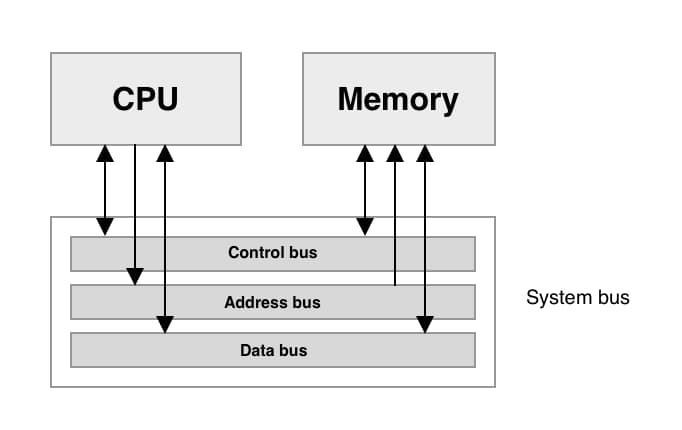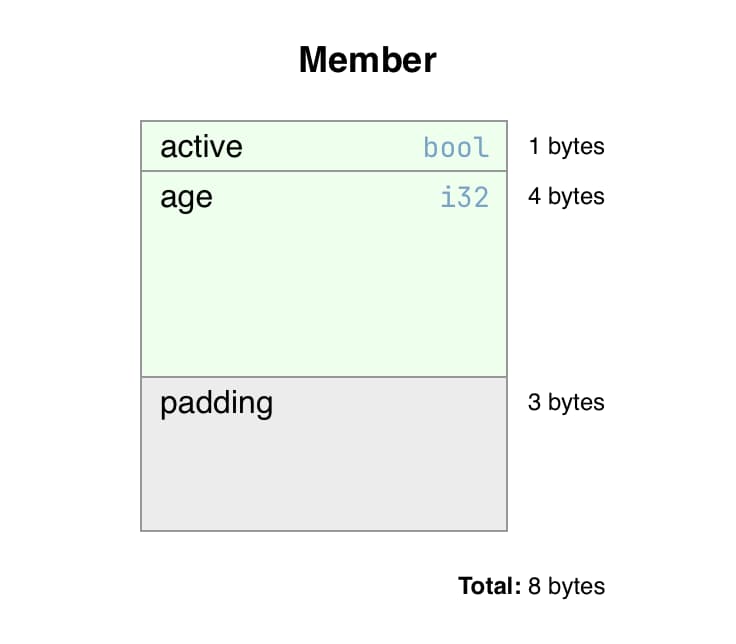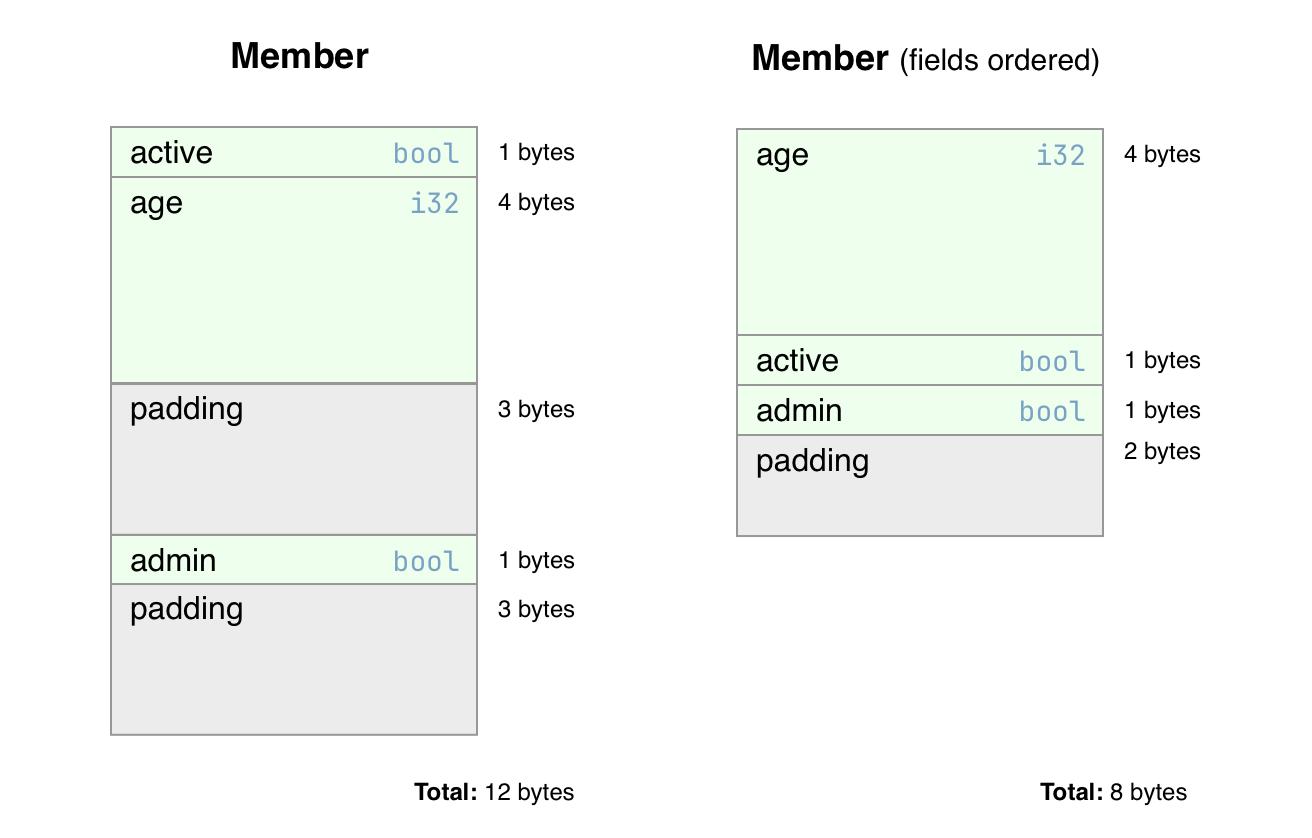Published 5 aug. 2022
Memory Alignment

We will explore memory alignment in Rust, highlighting the influence of padding and field order on struct size. Through practical examples, we learn how automatic re-ordering in Rust works, which is different from languages like C, C++, or Go.
Before we dive into it, let’s start with a practical example in Rust to show why this is relevant:
use std::mem;
struct Member {
active: bool,
age: i32,
}
fn main() {
println!("bool: {} bytes", mem::size_of::<bool>());
println!("i32: {} bytes", mem::size_of::<i32>());
println!("Member: {} bytes", mem::size_of::<Member>());
}We defined a struct called Member, which includes two fields.
Then we print the memory size of all of the types.
The size of a bool in rust is 1 byte, and the size of a 32-bit integer is 4 bytes; thus, the total size of our struct should be 5 bytes, right?
➜ cargo run
Finished dev [unoptimized + debuginfo] target(s) in 0.00s
Running `target/debug/memory-alignment`
bool: 1 bytes
i32: 4 bytes
Member: 8 bytesWhat kind of dark magic is this… Where do these extra three bytes come from?
CPU and memory
To understand how this works, we need to understand how the CPU reads the memory. The CPU sends the address of the memory it wants to read to the address bus. Then it sends the “read” command to the memory on the control bus, and finally, the memory will send the data to the data bus.

Overview of the system bus (I/O not included)
The amount of data transferred is often the same size as a single word (a unit specific for processors). On most 64-bit CPUs, the word size equals 8 bytes (=64 bits), whereas, on most 32-bit CPUs, this would be 4 bytes (=32 bits). Unaligned memory usually hurts performance as more CPU instructions are required. This is where memory alignment comes into place.
Back to our code
Remember that our Member struct has a size of 8 bytes while its fields combined only take up 5 bytes?
This is because the compiler automatically aligns our memory.
To do so, it adds three extra bytes of padding.

Memory layout of our struct on x86_64
The amount of padding is based on the field type, struct size, and CPU properties (such as the word size).
Field order
The order of the fields in C, C++, Go, and possible other programming languages matter because extra padding will be used. However, in Rust, struct fields will be re-ordered by default to get the smallest possible size. The compiler is allowed to do so because, by default, Rust makes no guarantees for struct types.
To demonstrate, we can use the C representation, which will use a type layout interoperable with the C Language. Let’s add another boolean field to our struct:
use std::mem;
#[repr(C)]
struct Member {
active: bool,
age: i32,
admin: bool,
}
fn main() {
println!("Member: {} bytes", mem::size_of::<Member>());
}The repr(C) attribute enables the C representation. This way, the fields won’t be re-ordered. Let’s execute it to see the result:
➜ cargo run
Compiling memory-alignment v0.1.0
Finished dev [unoptimized + debuginfo] target(s) in 0.53s
Running `target/debug/memory-alignment`
Member: 12 bytesWe can now “optimize” our Member struct by re-ordering the fields manually.
To get the memory size back to 8 bytes, we have to move the age field to be the first field in the struct:
use std::mem;
#[repr(C)]
struct Member {
age: i32,
active: bool,
admin: bool,
}
fn main() {
println!("Member: {} bytes", mem::size_of::<Member>());
}To verify if this has the expected result, we need to execute our program again:
➜ cargo run
Compiling memory-alignment v0.1.0
Finished dev [unoptimized + debuginfo] target(s) in 0.42s
Running `target/debug/memory-alignment`
Member: 8 bytesTo understand how this works, we can look at the memory layout for our Member struct both before and after re-ordering the fields.

Memory layout on x86_64 using the C representation with and without ordering fields
Tooling
As mentioned earlier, tooling is unnecessary when using Rust, as you most likely don’t have to manually re-order fields. However, when you use Go, you can configure the fieldalignment analyzer with golangci-lint to warn about “unoptimized” structures.
I’m not aware of any tooling for C or C++ so let me know if you have any suggestions!
Latest Posts
Discover more articles in our blog


